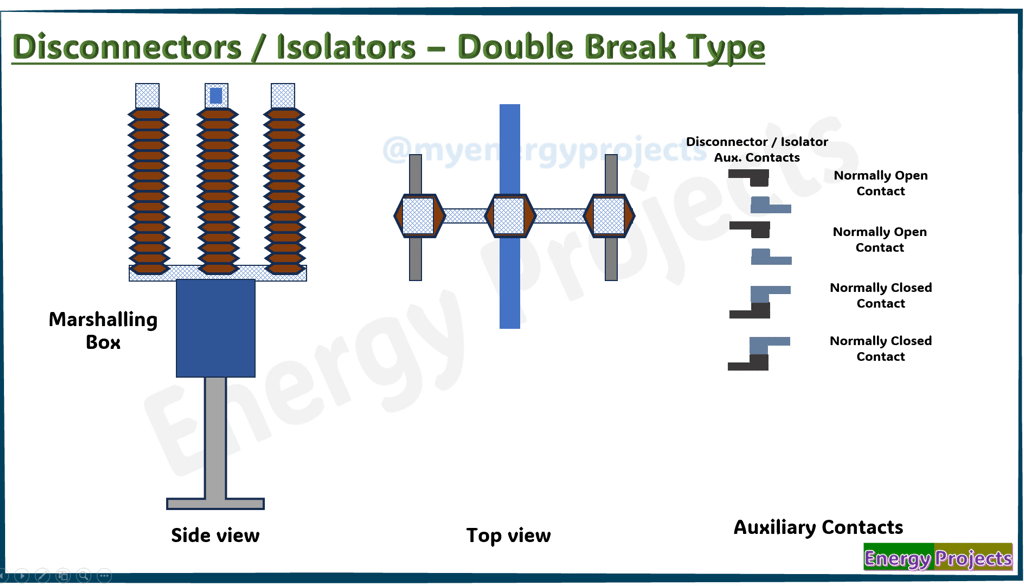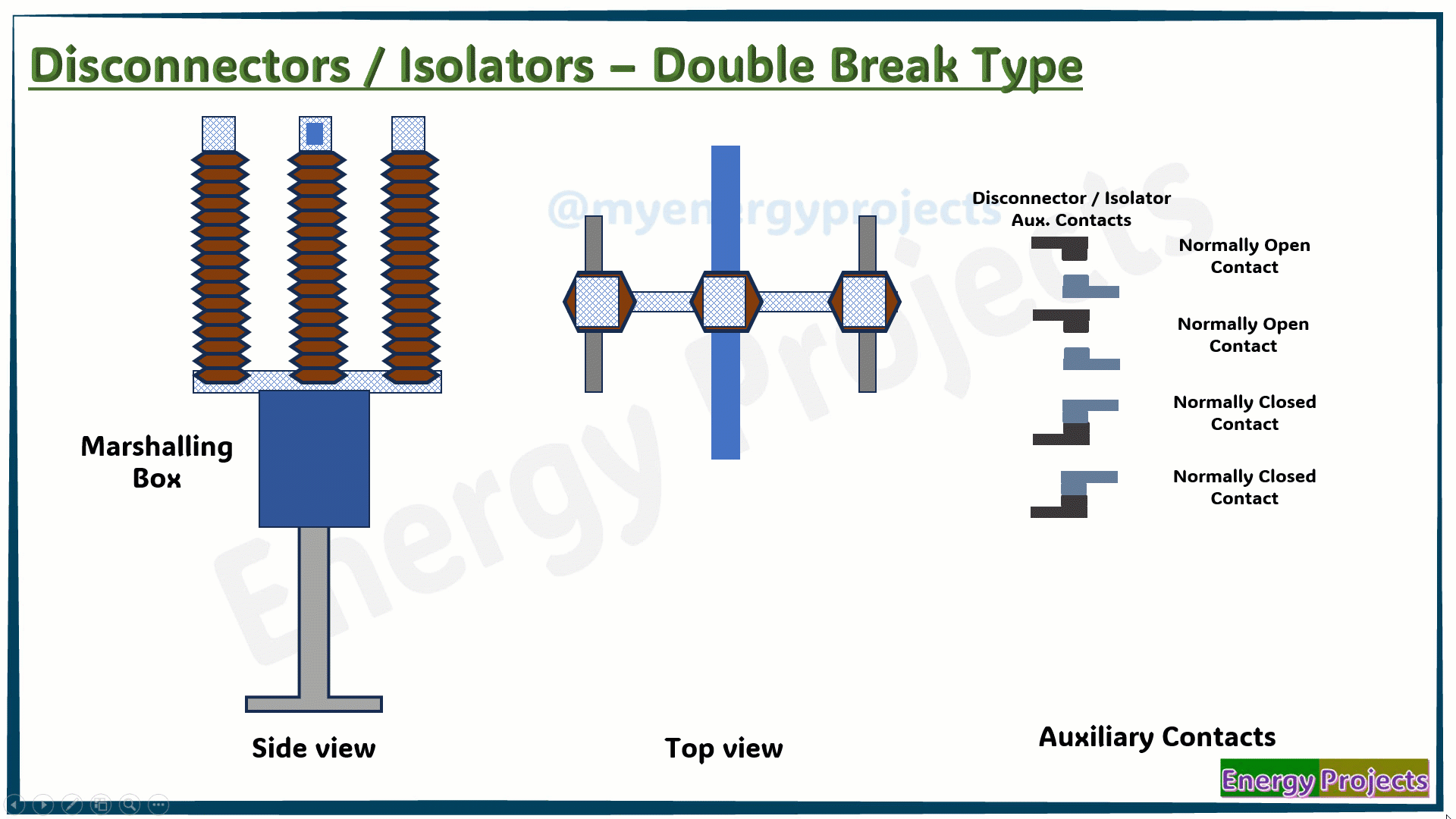01.Horizontal type Double Break Disconnectors


Single Busbar Configuration
Single Busbar with Bus section Configuration
Single Busbar with Transfer busbar configuration
Single Busbar with Bus section + Transfer bus coupler + Section Isolator configuration
Double Busbar with Bus coupler Configuration
Double Busbar with Bus coupler + Bypass Isolator Configuration
Double Busbar with Bus coupler + Transfer Buscoupler configuration
One and Half Breaker Busbar Configuration
Busbar Configuration
Track Sequence of Engineering
A Horizontal Double Break Disconnector is a type of isolator used in high-voltage electrical systems that interrupts the circuit at two separate points. It uses a central movable arm that disconnects two fixed contacts, offering a clear visual gap for enhanced safety. This configuration ensures dependable isolation, especially in compact substation layouts. Its symmetrical design helps improve structural balance and minimize phase clearance. These disconnectors are commonly used in systems where space is limited but reliability is crucial. Operation can be manual or motor-driven depending on system requirements.
Advantages
Offers dual-point isolation for better operational safety.
Requires less installation space due to compact structure.
The balanced design enhances mechanical durability.
Ensures clear visual confirmation of disconnection.
Disadvantages
Design complexity is greater than that of single-break types.
Higher installation cost due to additional components.
Maintenance may be slightly more challenging.
Must be operated when the system is fully de-energized, as it cannot interrupt load current.
Operation:
The double break disconnector operates by moving a central contact arm to simultaneously break the circuit at two fixed points. It must be operated only when the circuit is de-energized to ensure safe isolation. Please note that ,the connector will rotate in the horizontal direction.


